Non-Surgical Blog
Can a Non-surgical Clinic Alleviate a Bulging Disc?
April 19, 2025

- A bulging disc occurs when the spinal disc’s soft inner material pushes through a tear in its outer layer, potentially causing back pain and other issues.
- Chiropractic care offers a non-invasive approach to addressing bulging discs, aiming to relieve pain and improve mobility.
- Non-surgical clinics utilize various techniques, including spinal decompression, flexion-distraction, and massage, to address the discomfort from a bulging disc.
Experiencing back pain can significantly impact your daily life. When a bulging disc is the source of this discomfort, many seek relief and lasting solutions. Chiropractic care, with its focus on the spine and nervous system, offers a non-invasive and holistic approach to treat bulging disc-related back pain. This article explores the potential benefits of chiropractic care as a treatment option for this condition.
Understanding Bulging Discs and Their Impact on Your Health
The spine, a complex structure of bones, discs, nerves, and muscles, is susceptible to wear and tear over time. Imagine the spinal discs, acting as cushions between vertebrae, are like jelly donuts. A bulging disc occurs when the soft, jelly-like center (nucleus pulposus) pushes against its outer layer, similar to jelly pushing out when a donut is squeezed.
Though common and often related to aging, bulging discs can be caused by injury, improper lifting, or repetitive strain. The impact on one’s health is significant, leading to pain, numbness, tingling, and weakness, especially if the bulging disc compresses nearby nerves.
The Anatomy of a Spinal Disc: What Makes It Bulge?
To grasp the nature of a bulging disc, visualizing the anatomy of a spinal disc is essential. The spinal disc is composed of two main parts: a tough outer layer called the annulus fibrosus and a soft, gel-like center known as the nucleus pulposus. The annulus fibrosus provides stability and flexibility, while the nucleus pulposus acts as a shock absorber.
A bulging disc occurs when the annulus fibrosus weakens or tears, allowing the nucleus pulposus to protrude outward. This protrusion can then irritate nearby nerves or the spinal cord itself, causing a range of symptoms.
Several factors can contribute to disc degeneration, including aging, repetitive stress, poor posture, and injury. As we age, the discs naturally lose some of their water content, making them less flexible and more prone to tearing.
Common Symptoms and Risks Associated with Bulging Discs
Bulging discs may or may not cause symptoms, often depending on the location and severity of the bulge. Lower back pain is the most common symptom, especially when the bulge occurs in the lumbar spine. Neck pain can also occur if a bulging disc affects the cervical spine.
Additional symptoms of a bulging disc may include pain, numbness, or tingling that radiates down the arms or legs; muscle weakness in the arms or legs; and difficulty with balance and coordination.
If left untreated, a bulging disc can lead to more serious complications, such as a herniated disc, spinal stenosis, or permanent nerve damage. Early diagnosis and treatment, potentially through chiropractic care, are crucial to prevent these complications.
Chiropractic Techniques for Treating Bulging Discs
Chiropractic care at Chattanooga Non-Surgical Orthopedics emphasizes a holistic approach, focusing on the relationship between the spine and the nervous system. Non-surgical clinics aim to alleviate pain and improve function through various techniques. When it comes to treating bulging discs, they employ specific methods designed to reduce pressure on the affected nerves and promote healing.
These techniques often involve gentle manipulations of the spine, known as chiropractic adjustments. By restoring proper spinal alignment and movement, chiropractic care aims to reduce nerve irritation and create an environment conducive to healing.
Spinal Decompression: A Non-Surgical Approach
Spinal decompression is a non-surgical technique used by Non-surgical clinics to treat bulging discs, herniated discs, and other related conditions. This therapy uses a specialized table that gently stretches the spine, creating negative pressure within the discs. This negative pressure can help to retract the bulging disc material, taking pressure off the affected nerves.
Additionally, spinal decompression can promote the flow of nutrients and oxygen to the discs, which can aid in the healing process. This treatment option is often considered for individuals seeking a non-surgical approach to address their disc problems.
Many patients experience a reduction in pain, numbness, and tingling after a series of spinal decompression sessions. It is essential to work with a qualified healthcare provider experienced in spinal decompression techniques.
Flexion-Distraction Technique: Easing the Pressure
The flexion-distraction technique is a gentle, hands-on approach used by Non-surgical clinics to treat bulging discs, particularly in the lower back. The Non-surgical clinic uses a specialized table that allows for controlled flexion, extension, and lateral bending of the spine. By applying precise movements, the technique aims to achieve the following:
- Pain relief: Flexion-distraction helps reduce pressure on the affected nerve by gently separating the vertebrae surrounding the bulging disc. This separation can alleviate pain and discomfort.
- Improved range of motion: The controlled movements of flexion-distraction help restore normal spinal mechanics, leading to improved flexibility and range of motion.
- Reduced muscle spasms: By addressing the underlying spinal dysfunction, flexion-distraction can alleviate muscle tightness and spasms that often accompany a bulging disc.
This technique is often combined with other chiropractic modalities for a comprehensive approach to treatment.
Conclusion
Chiropractic care offers promising non-surgical solutions for managing bulging discs by alleviating symptoms and promoting spinal health. Understanding the anatomy of spinal discs and their impact is crucial in exploring effective treatment options. Techniques like spinal decompression and flexion-distraction can provide relief and improve mobility.
If you’re seeking natural ways to address bulging discs, chiropractic care may be a beneficial path to consider. For personalized guidance and professional support, don’t hesitate to get in touch with us. Let’s work together towards a healthier spine and a more comfortable life.
Frequently Asked Questions
How does chiropractic care help with a bulging disc?
Chiropractic care uses spinal manipulation and other techniques to treat a bulging disc. These adjustments help relieve pressure on the affected nerve, alleviate pain, and improve spinal function. Chattanooga Non-Surgical Orthopedics develops a tailored treatment plan based on your individual needs and health history.
Is chiropractic treatment safe for everyone with a bulging disc?
While generally safe, chiropractic treatment for a bulging disc is not suitable for everyone. Chattanooga Non-Surgical Orthopedics will conduct a thorough medical history review and physical exam to determine if any contraindications exist that might make this treatment unsafe.
How long does it typically take to see improvements?
The recovery time for a bulging disc varies based on the individual’s condition and response to treatment. Following your Chattanooga Non-Surgical Orthopedics‘ recommended treatment plan, including adjustments and home exercises, is crucial for optimal healing. Be patient and consistent for the best outcomes.

Search our blog posts: